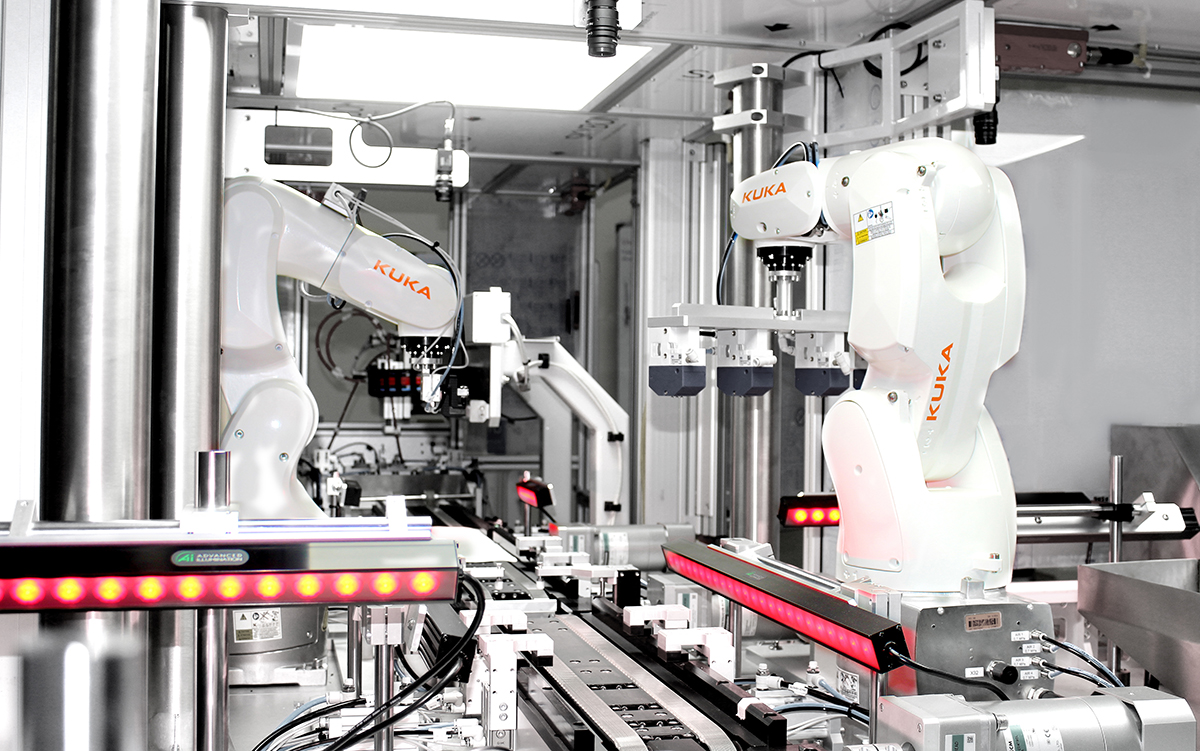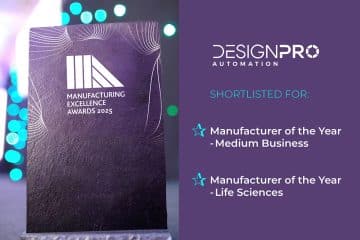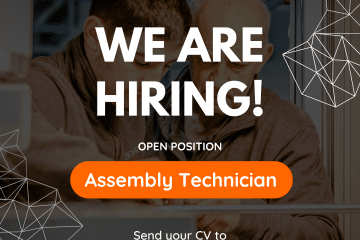The use of robotics in the manufacture of medical devices has proven to have many key benefits including; repeatability, increased productivity and reduced costs. These were the exact requirements which were outlined by our latest client – a leading global medical technology company with a focus on advanced wound care and speciality surgical applications.
As a robotic/system integrator our role is to analyse customer needs, develop concepts and design automated solutions that fit within the specific requirements of today’s advanced manufacturing facilities. This particular project, which successfully delivers 23 complex assembly processes, demonstrates how the machine builder, client and robot supplier can collaborate successfully in order to maximise the value of the project and significantly boost the competitive advantage of all parties involved.
The Challenge
The project was to design an automated production line for a cutting edge, medical trauma dressing involving highly innovative vacuuming techniques to deliver unparalleled quality, efficiency and performance. The product was previously produced manually by an external supplier but due to an increase in demand and the need to ensure continuity of supply going forward our client decided to establish a production line at their own facility. Through the use of robotics, the aim was to design a custom assembly line that would allow the client to produce the volumes required to gain significant market traction thus boosting their share and influence in their niche product space.
A number of challenges were identified early on in the project such as; repeatability, accuracy and the dexterity required to handle the component material. Requirements set out by the client regarding the machines performance included a throughput rate of 6 parts per minute and 95% pass rate. In order to address these points and increase the production capacity of the clients existing line the introduction of a robotic element was identified as being key to delivering a flexible solution that would help to reduce operational costs.
Several key objectives were identified:
- Develop a solution with the ability to handle 5 flexible components.
- Increase efficiency and throughput of the 23 assembly processes.
- Improve the quality of the final product to reduce failure rate.
Our Approach
Early involvement in the project planning stage allowed our design team to identify and eliminate potential risks at the back-end of the project. The involvement of our R&D department enabled us to develop and test 8 different concepts for the machine, 7 of these were proof-of-concept trials which included the following technologies:
- Vacuum Forming
- Impulse Welding
- Web Feeding
- Ultrasonic Tests
- Drape Handling
- Laser Cutting
- Rotary Cutting
- Robotic Pick & Place
The series of proof of concept projects involved; the construction of individual substations, robotic simulations and time trials. These concepts formed the core functions of the assembly process and based on the findings, the KUKA KR3 and KR6 six axis robot models were identified as having the complexity of movement and intelligence to handle the tight tolerances required to handle the flexible material.
The robots teamed with vision and sensor technology allowed the various components to be accurately detected and coordinates to be communicated back to the PLC guaranteeing all the various elements would be placed in the correct position every time.
A core element in this solution was the unique design of the linear transfer system which enabled high precision processes to be achieved over a 4.5 m length with an accuracy of 0.2.
The Result
The keys goals achieved in the final design can be outlined as follows:
- Production Capacity Increase – an increase in the efficiency of the assembly process from 3 to 6 parts per minute.
- Increased Flexibility – accommodating 3 product variants with the option to introduce new sizes in the future.
- Improved Quality – the accuracy and high tolerance of the robots and vision systems meant tasks such as peeling and positioning components remained consistent.
- Operational Cost Reduction – previously 6 operators were required to man the line now only 3 operators are needed, reducing direct labour and operational costs.
- Control and Security of Supply – this new in-house production line meant the client no longer had to depend on an external supplier, reducing indirect labour costs and allowing the client to control supply through a more reliable process.
Projects such as this highlight the new era of operational excellence that is set to transform the design and manufacturing of products and production systems. Connectivity and interactions among parts, machines and people has made this system as much as 100% faster, and 20% more efficient – elevating the clients mass production to new levels.
All our solutions are tailored to our customers specific production requirements and manufactured to the highest quality. For a full portfolio of our standard offerings review our comprehensive Process Catalogue.





